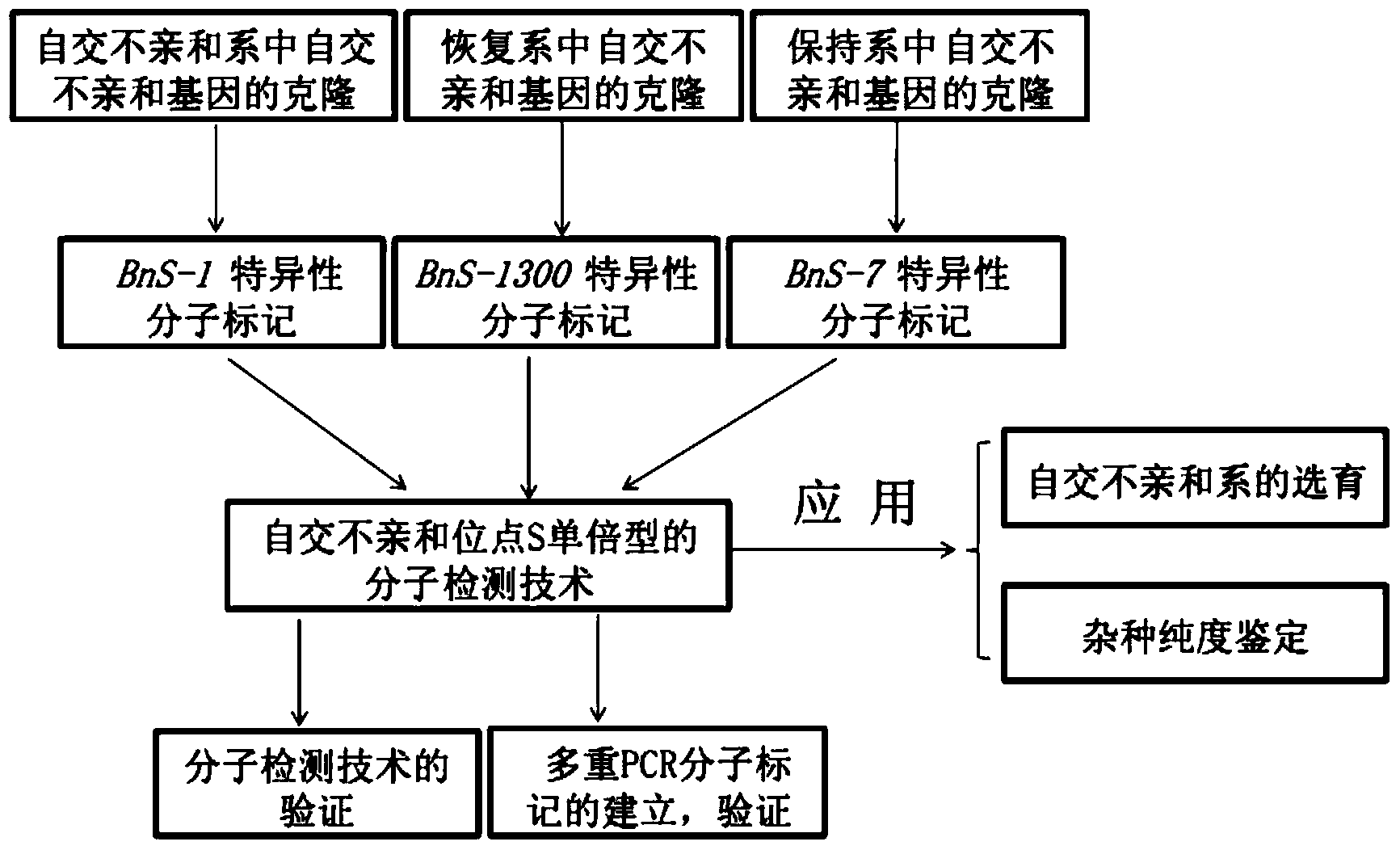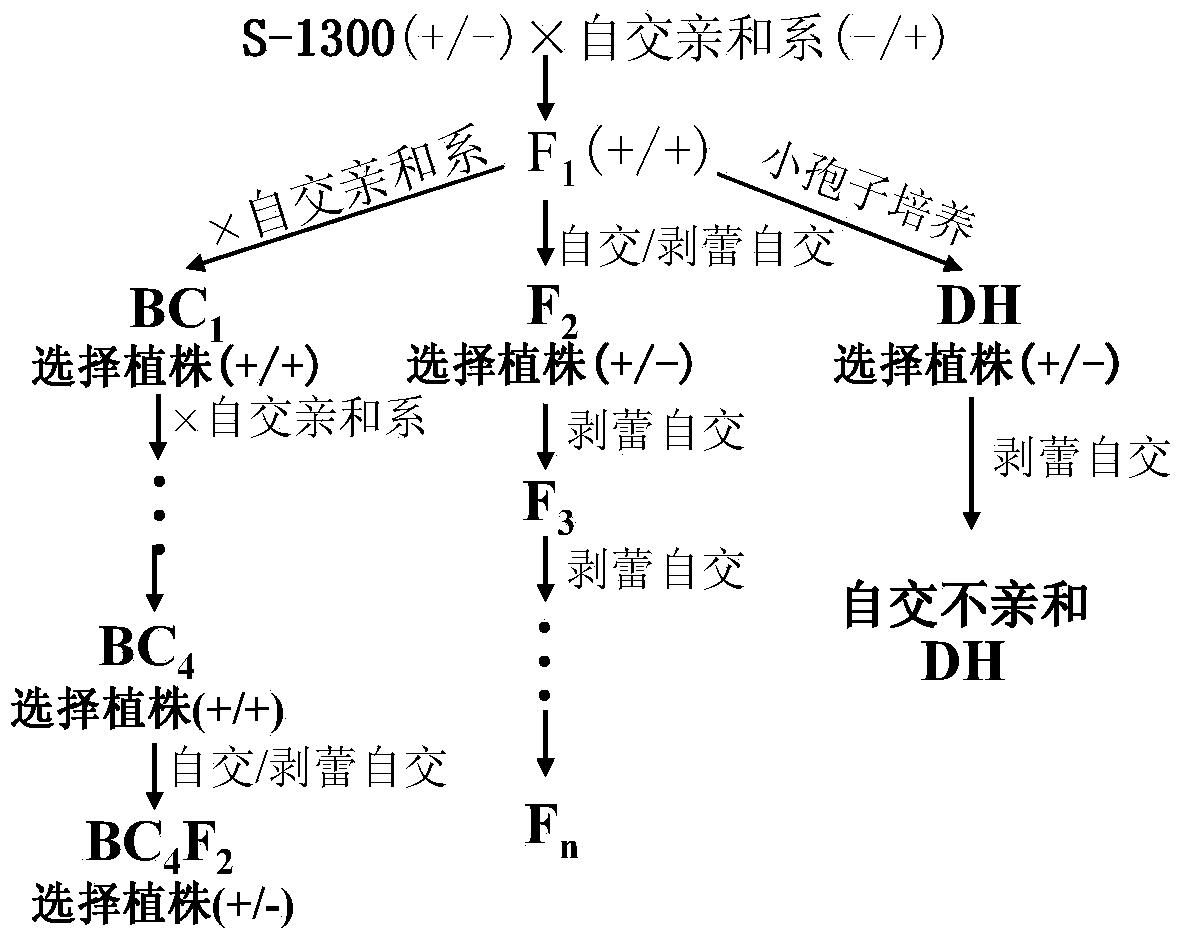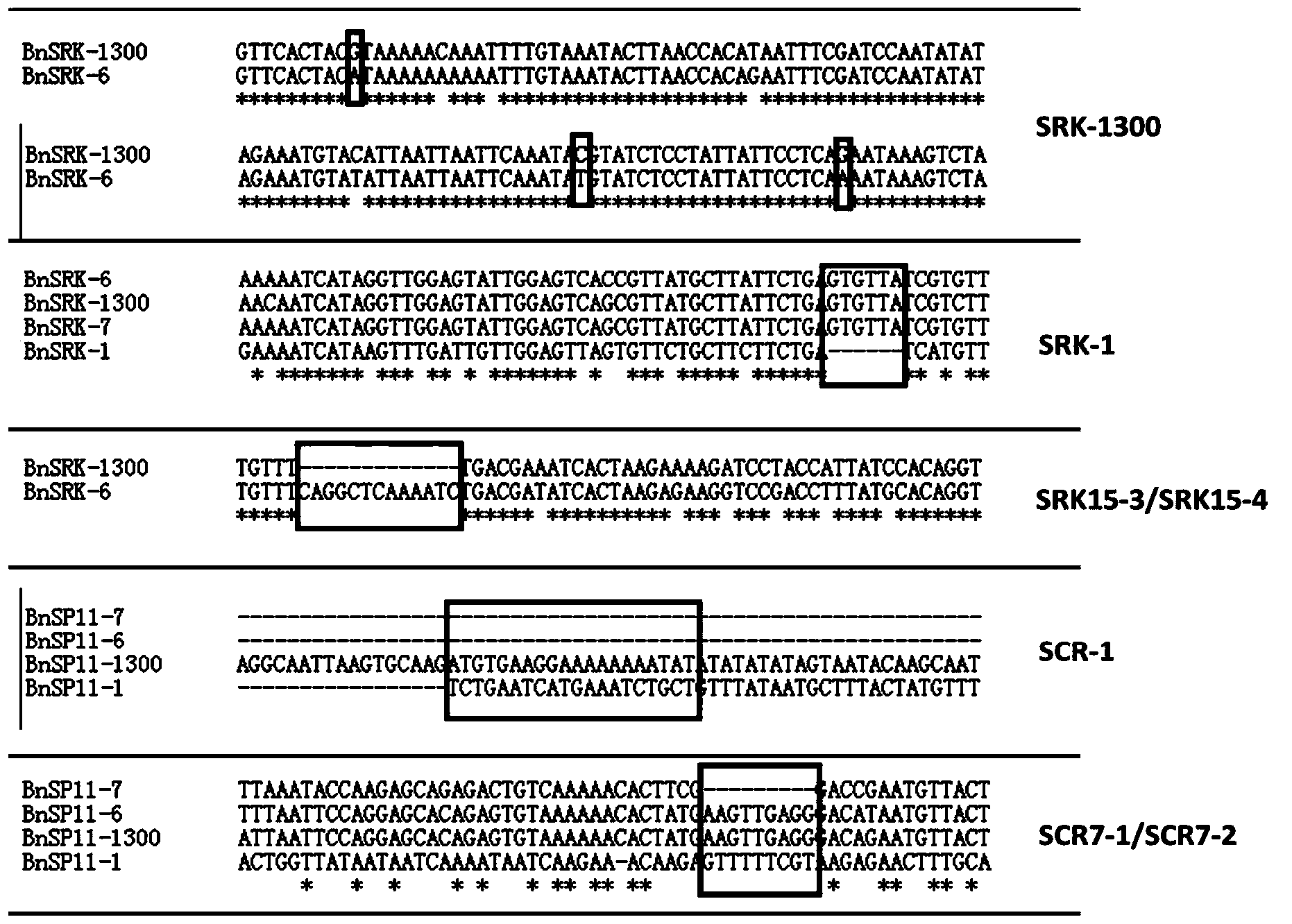Molecular detection method of Brassica napus self-incompatible S-locus haplotype
A Brassica napus and haplotype technology, which is applied in the directions of biochemical equipment and methods, microbial determination/inspection, DNA/RNA fragments, etc., can solve the problem of low hybrid combining ability, select and breed self-incompatible restorer lines Efficiency, low and other issues
- Summary
- Abstract
- Description
- Claims
- Application Information
AI Technical Summary
Problems solved by technology
Method used
Image
Examples
Embodiment 1
[0057] 1. Acquisition of segregated groups
[0058] Brassica napus self-incompatibility line S-1300 (see literature: Ma Chaozhi et al., Breeding of Brassica napus double-low self-incompatibility line, Journal of Huazhong Agricultural University, 1998, 17 (3): 211-213 ) as the female parent and the Brassica napus self-incompatibility restorer line '8400' as the male parent (Gao et al. The genetic characterization of self-incompatibility in a Brassica napus line with promising breeding potential, Mol Breed2013, 31: 485-493) get F 1 seed, the F 1 Seeds are sown to get F 1 plant, the plant was bagged and selfed to obtain F 2 separate groups, take F 1 Plant pollen was backcrossed with S-1300 to obtain BC 1 Separate groups. Similarly, the female parent of Brassica napus self-incompatibility line S-1300 and the male parent of Brassica napus self-incompatibility maintainer line Bing409 were crossed to obtain F 1 seed, the F 1 Seeds are sown to get F 1 plant, the plant was bag...
PUM
 Login to View More
Login to View More Abstract
Description
Claims
Application Information
 Login to View More
Login to View More - R&D
- Intellectual Property
- Life Sciences
- Materials
- Tech Scout
- Unparalleled Data Quality
- Higher Quality Content
- 60% Fewer Hallucinations
Browse by: Latest US Patents, China's latest patents, Technical Efficacy Thesaurus, Application Domain, Technology Topic, Popular Technical Reports.
© 2025 PatSnap. All rights reserved.Legal|Privacy policy|Modern Slavery Act Transparency Statement|Sitemap|About US| Contact US: help@patsnap.com



